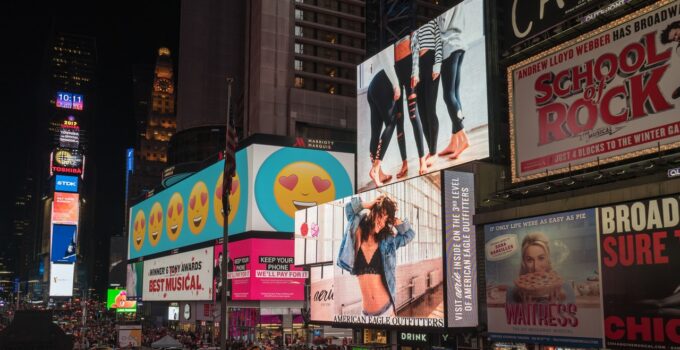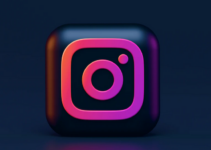Whether you work for an ad agency, marketer, or promote your product, taking the time to invest in a new direction is an important decision. It is very important to understand how to create ads that generate conversions. Over 80% of social media users follow brand profiles, and more than 2 million brands are advertising on Instagram. There are already several billion users on social media, and each of them spends 53 minutes a day scrolling, tapping, and posting content. Instagram is among the top 5 sources of internet traffic, accounting for 5.7% of global internet traffic. By comparison, Facebook’s share is 8.4%, while web searches are only 4.6%.
Considering that this platform is one of the main visual social networks today, you can’t do without good graphics and creativity in advertising. Besides, this source provides a great number of techniques that can affect people’s perception, and it can be very interesting to learn what they are.
In this post, we collected 7 tips that you can integrate into your creation process starting today.
Page Contents
1. Type of Visual Ads: Awareness or Conversions?

Source: business2community.com
We’ll come back to formats and creatives later, but for now we need to figure out the goals. Instagram advertising goals fall into three main groups: awareness, leads, and conversions. If your goal is recognition, more users will hear about your business, product, application or service as this format assumes wider reach and increased brand awareness among potential customers.
If you prefer leads, this goal works to ensure that customers already receive more information about your products or services. If you need to bring consumers close to the product, familiarize them with it more closely and increase their reputation – this is the most appropriate goal.
With the goal of conversions, there are more purchases and downloads than just views. If your check is high and your purchase cycle takes at least a week, conversion ads are unlikely to be a good investment.
The choice of an advertising goal directly depends on what exactly you want to achieve with the ad, whether to increase in awareness and reputation or perfect sales.
2. Preparing Ads
The key recommendation that Facebook and Instagram give when preparing ads is that there should not be more than 20% of the text. The rest of the tips are in context, only the most observant will notice them. To find the right wave in the preparation of creatives, we advise you to spend an hour or two studying useful cases. The more creative will stand out from the total mass of content, the better. Instagram itself advises to gamify the plot as much as possible, surprise, go against standards and rules.
The right formats, goals, and targeting are only part of the success. If the ad image or video is boring or irrelevant to the audience, no one will react to it, even under other ideal conditions. Feel free to experiment.
Simplify and speed up your work with graphics using templates in graphic editors. They are already created in the correct sizes for any of the formats and require minimal creative work.
3. Product in Focus

Source: pexels.com
The user must understand which product is being advertised in the first 3 seconds or less. On average, people spend 1.7 seconds on one unit of content on mobile, so you need to get them acquainted with the product very quickly.
4. A Clear Message
It is important to convey one (and only one) main idea using graphics. Emphasize it in every possible way – with stickers, animations, bright colors. Whether the graphic content is studio-based or “sloppy-simple,” a powerful creative idea has to be read.
5. Creatives and A / B testing

Source: crazyegg.com
Graphic editors help you prepare creatives faster for A / B testing (split tests) – a must if you want to get the most out of your ad campaign. Change labels, colors, images, try animation instead of static, and vice versa. The more options you research, the more likely you are to find the perfect one.
When launching campaigns, you need to be prepared for the fact that the lion’s share of creatives may not be as effective as it seemed. The more tests, the better, so you will have a deeper understanding of what the audience enters and what does not. Unfortunately, these conclusions are not always obvious, and all hypotheses need to be tested in practice.
Finding a better picture or choosing between a picture or video in an ad are not the most important aspects in testing. The key is to find and select the necessary words that should convey your proposal as relevant as possible.
6. Visual Concept
The core of the visual concept is colors, fonts, and text placement. Therefore it is important to decide on corporate colors so that the user can recognize your brand even on an intuitive level and choose readable fonts to place on your ads.
Choose compositional solutions and UX-templates (design solutions) for the design of publications, banners and other creatives. Compositional solution means the appropriate arrangement of everything depicted on the creative, highlighting all the main things.
Remember, people scroll their Facebook feed very quickly. Make sure that the picture does not contain more than 20% of the text, in order to avoid the cost increase for the result. Use Image Text Check Facebook’s tool to check the amount of text in a picture.
Since you cannot make text bold or italicized in your Facebook ad, use emoji for an emotional approach and ALT code for a rational approach.
It’s also important to use calls to action (CTA) in conversion campaigns. CTA is needed to entice the user to take the action you want. It can be anything: register for an event, download an e-book, and more.
7. Work on Targeting

Source: morebusiness.com
Analyze your audience methodically and carefully, create different groups and check how they react to you. The more accurate the audience and the finer the targeting, the more people will react to you.
While basic ad design tips are a great start, these tips will help you to make a lasting impression on your audience. Feel your audience and get a good understanding of their needs, desires, or problems that you can solve through proper visual ads.





